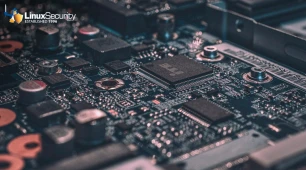
With our increasingly complex technological ecosystem, ensuring the security and resilience of Central Processing Units (CPUs) has never been more essential. Traditional processors like x86 and ARM have long dominated the market, providing robust performance while facing severe security vulnerabilities.
With Linux 6.12's release comes a new chapter of vulnerability reporting across RISC-V processors. This step unifies RISC-V with industry standards and provides greater transparency and security assurance. In this article, I'll delve into the challenges traditional processors face regarding CPU vulnerabilities, the importance of Linux 6.12's implementation of RISC-V vulnerability reporting, and how this new feature will aid its adoption by mainstream markets.
Challenges Faced by Traditional Processors
 Since their invention, CPUs have become the backbone of modern computing systems. As technology progressed, notable milestones, such as introducing multicore processors and multithreading capabilities, were reached. These innovations have significantly boosted the efficiency and performance of computing systems. Multicore processors allow simultaneous execution of multiple tasks on separate cores, while multithreading allows one core to manage several threads concurrently.
Since their invention, CPUs have become the backbone of modern computing systems. As technology progressed, notable milestones, such as introducing multicore processors and multithreading capabilities, were reached. These innovations have significantly boosted the efficiency and performance of computing systems. Multicore processors allow simultaneous execution of multiple tasks on separate cores, while multithreading allows one core to manage several threads concurrently.
These advances, while providing new capabilities, have also introduced additional layers of complexity. A primary security threat facing traditional processors involves side-channel attacks. These exploit the indirect effects of physical operations to gain unauthorized access to information. One such attack is the Spectre attack, which exploits speculative execution - an approach commonly employed by modern CPUs to increase speed - to gain and leak access to secure information.
Power consumption patterns can provide insight into ongoing CPU operations, potentially exposing sensitive information. Mechanisms created to enhance CPU performance also render them vulnerable to sophisticated attacks. Features like speculative execution, intended to increase speed, can create vulnerabilities instead. As CPU architectures evolve with more cores and threads, the risk of vulnerabilities increases unless significant security measures are implemented to address them. Striking an optimal balance between high performance and robust security is the challenge.
Linux 6.12 Introduces RISC-V Vulnerability Reporting
Within emerging architectures, RISC-V has rapidly gained prominence, and its inclusion of generic CPU vulnerabilities reporting in Linux 6.12 was an important milestone. Typically only available on x86 and ARM architectures, this feature provides an open window into potential vulnerabilities and their mitigation statuses. This represents a step toward maturation for RISC-V, making its security posture comparable with established architectures.
Security researchers and developers from organizations like Huawei and Rivos have played an instrumental role in creating vulnerability reporting mechanisms for RISC-V. Including this feature demonstrates a robust commitment to future-proofing the architecture against potential security threats, signaling to the tech community that RISC-V prioritizes performance and security.
Users of RISC-V processors will benefit from generic CPU vulnerability reporting to assess their systems' security status quickly. This transparency is vital, especially in identifying whether known vulnerabilities have compromised them and which are still secure. Vulnerabilities will be reported through an easy-to-access directory within the Linux kernel to provide visibility and ensure ease of access by users and developers.
Benefits of RISC-V Vulnerability Reporting
Linux 6.12's implementation of vulnerability reporting significantly boosts RISC-V processor security. By offering an organized and transparent mechanism for identifying and mitigating vulnerabilities, RISC-V processors have become an attractive option for industries prioritizing security. This ensures that RISC-V remains future-proof, capable of anticipating possible v ulnerabilities before they arise.
ulnerabilities before they arise.
One of the key ingredients of successful processor adoption is user trust. Users need assurances that their systems will withstand emerging threats without issue. Linux 6.12 boosts confidence in RISC-V processors by providing transparency into vulnerabilities and their mitigation, which helps build trust between users, developers, and industry stakeholders. Adherence to industry standards is paramount for any architecture looking for mainstream adoption. With generic CPU vulnerability reporting now included as part of RISC-V's development, it stands on an equal footing with well-established architectures like x86 and ARM. This alignment establishes RISC-V as ready to compete in mainstream markets and assures stakeholders of its long-term viability and security.
One of RISC-V's distinctive strengths is its open-source nature, which fosters collaborative environments for continuous improvement. The vulnerability reporting feature draws upon the expertise of global developers to quickly identify and address security issues, contributing to a more resilient and robust RISC-V architecture.
Future-Proofing Potential
RISC-V's proactive security features, such as generic CPU vulnerability reporting, exemplify its future-proofing capability. As technology continues to change and emphasize security and sustainability goals, RISC-V stands ready to meet these evolving demands. Innovations such as socketed processors could extend hardware lifespan while decreasing electronic waste, aligning with sustainability objectives.
Our Final Thoughts on Redefining CPU Security with RISC-V Vulnerability Reporting
Adding generic CPU vulnerabilities reporting for RISC-V processors in Linux 6.12 marks an impressive step forward for processor security. This feature enhances RISC-V security posture while building user confidence and aligning it with industry standards by providing an open and transparent mechanism for reporting vulnerabilities. As adoption increases for this emerging processor platform, this proactive security measure will play an invaluable role in its adoption and help it remain competitive within an increasingly security-aware market.


















